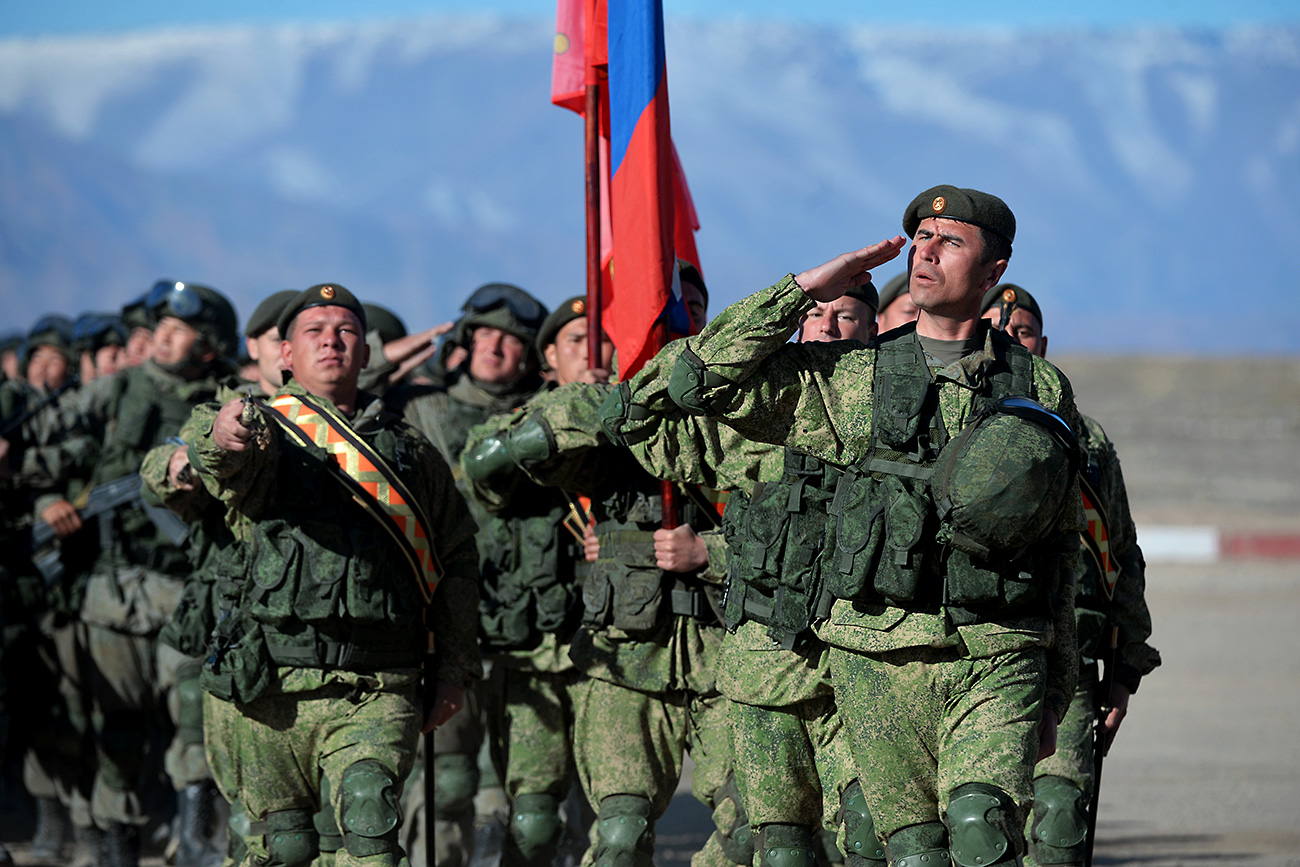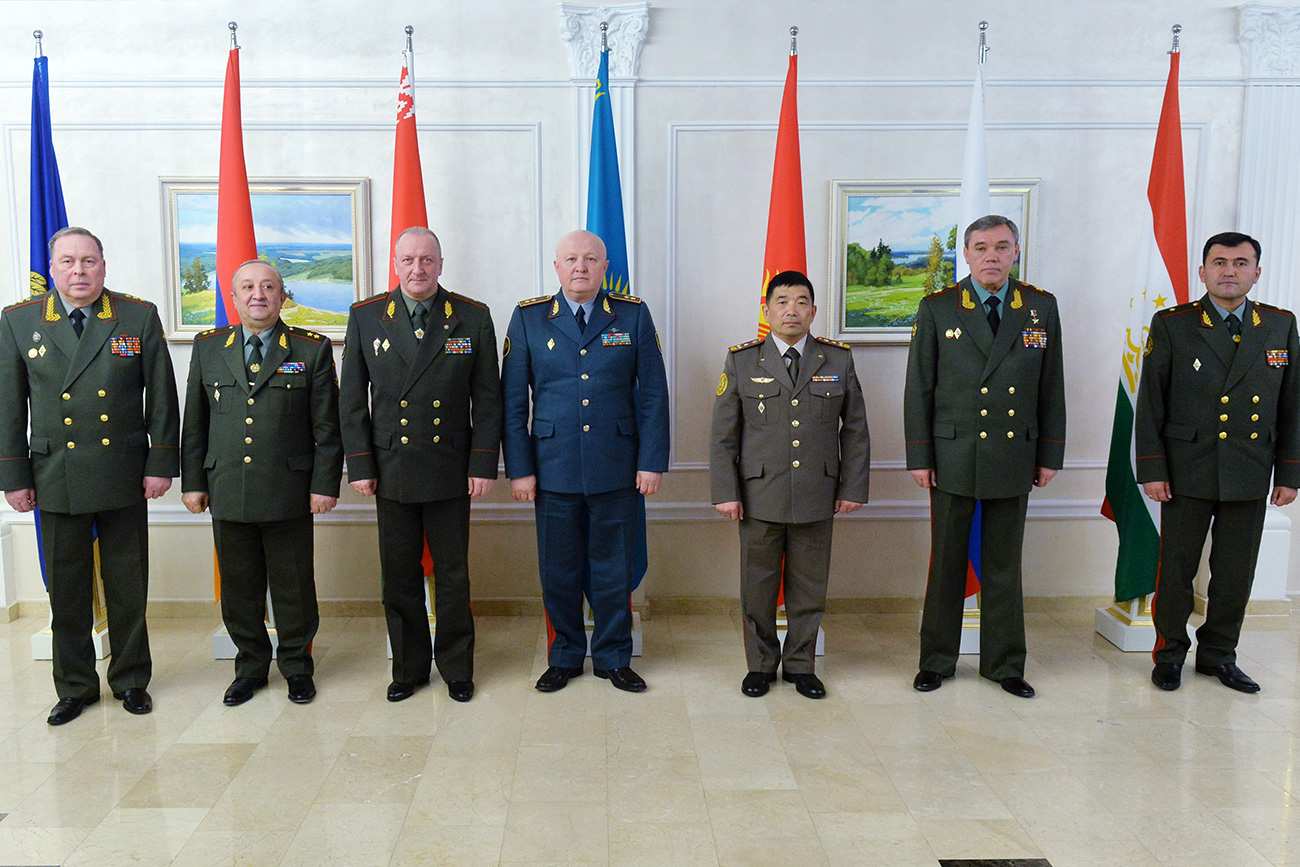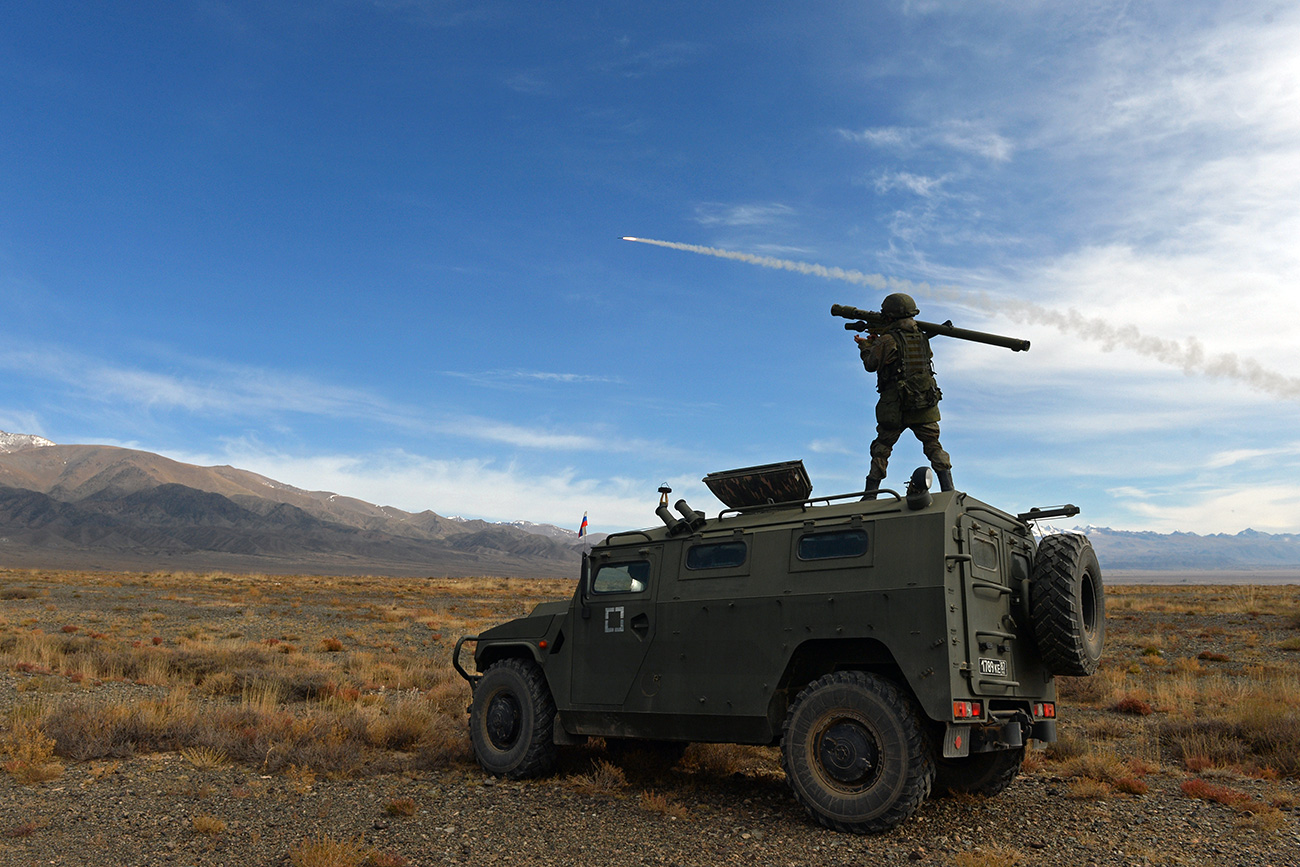
The post-Soviet countries, was signed 25 years ago in 1992, but for 10 years it’s validity was questionable. Photo: Russian service personnel at the Balykchy military base, Kyrgyzstan.
Mikhail Voskresenskiy/RIA NovostiIn 2017, the Collective Security Treaty Organization (CSTO) is celebrating a strange "double" anniversary. The agreement, which covers the military-political alliance of the post-Soviet countries, was signed 25 years ago in 1992, but for 10 years it’s validity was questionable. In the 1990s the post-Soviet landscape was ravaged by conflict: The war in Nagorny Karabakh (1992-1994), the civil war in Tajikistan (1992-1997), the Georgian-Abkhaz War (1992-1993), as well as violent fighting in Russia's Chechen territory (1994-1996 and 1999-2000).
The situation started to stabilize by the beginning of the 2000s, which helped build a full-fledged international organization around the 1992 agreement: Russia, Belarus, Kazakhstan, Armenia, Kyrgyzstan, and Tajikistan created the CSTO in 2002. The aims indicated in the organization's charter have been preserved to this day: "The strengthening of peace, international and regional security, the collective protection of independence, territorial integrity, and sovereignty of the member states."
 Representatives of the CSTO member-states during the 10th CSTO Military Committee meeting in Minsk, Belarus. Source: Viktor Tolochko/RIA Novosti
Representatives of the CSTO member-states during the 10th CSTO Military Committee meeting in Minsk, Belarus. Source: Viktor Tolochko/RIA Novosti
Even before the institutionalization of the CSTO, in 2001 the member countries created a joint military contingent: The Collective Rapid Reaction Force (CRRF). Experts note that the main reason for organizing a joint defense force was the spread of terrorism in Central Asia from Afghanistan, which from 1996 to 2001 was ruled by Taliban extremists.
"Had the international coalition headed by the U.S. not begun its operation in Afghanistan, the CSTO countries would have had to collectively repel the extremist raids from Afghanistan," writes Yulia Nikitina, collaborator from the MGIMO Center of Post-Soviet Studies, in an article for the Russian Council of International Affairs. "This is why it was important to create the collective force."
But things turned out differently. The international coalition's operation began in Afghanistan and the post-Soviet republics were able to avoid a large-scale attack from the extremists. Nevertheless, the CSTO as an organ of collective security gradually developed. In 2009 there appeared a broader joint group than the CRRF, the CORF (Collective Operative Reaction Force). Today the CRRF and the CORF have a total number of 25,000 troops.
The CSTO has still not participated in real conflicts. Nevertheless, each year the organization conducts joint military training in which it develops skills to counter the militants and plans operations against criminals. In 2017 the organization will hold large training exercises involving the CRRF, CORF, and peacekeeping units.
Yulia Nikitina notes that from a military point of view the CSTO's activity is certainly useful: The joint drills not only help to develop action plans for possible conflicts, but also increase soldiers’ development. On the other hand, as Alexei Malashenko from the Carnegie Moscow Center told RBTH, the CSTO's real strength is unknown since the organization has never participated in real conflicts. "No one has ever seen this organization in action. Joint training is good, but it’s always different from real combat."
At the same time experts believe that the existence of the CSTO alone helps avoid conflicts. "Fifteen years ago most experts predicted a new wave of violent clashes, for example, in Central Asia. They didn't take place," says Sergei Karaganov, dean of the HSE Department of World Politics. "To a certain extent because Russia and other countries interacted, strengthening their armed forces." From this viewpoint the alliance is very effective, adds Karaganov.
Deputy Director of the Institute of CIS Countries Vladimir Zharikhin agrees. In his words, the CSTO was created as a defensive bloc and is carrying out its tasks successfully. Besides the war on terror, Zharikhin spoke of another CSTO task: "With the help of the organization Russia provides its CIS allies with a "nuclear umbrella" that increases stability in countries that are part of the CSTO." In other words, the CSTO's unofficial objective is to oppose "color revolutions" in member countries, explains Zharikhin.
 An army serviceman with Igla short-range man-portable air defense system standing on a Tigr armored vehicle during a joint tactical exercise of the Collective Rapid Reaction Force (CRRF) of the CSTO, Rubezh-2016, at the Balykchy military base in Kyrgyzstan. Source: Mikhail Voskresenskiy/RIA Novosti
An army serviceman with Igla short-range man-portable air defense system standing on a Tigr armored vehicle during a joint tactical exercise of the Collective Rapid Reaction Force (CRRF) of the CSTO, Rubezh-2016, at the Balykchy military base in Kyrgyzstan. Source: Mikhail Voskresenskiy/RIA Novosti
In the Western media the CSTO is sometimes compared to NATO. However, the media adds that this comparison is not entirely correct. Thus, in the article "Why Russia’s Military Alliance Is Not the Next NATO" Stratfor analyst Eugene Chausovsky stresses that often there is no accord within the CSTO on political issues. The governments of Belarus and Kazakhstan, for example, can exhibit independence from Moscow and construct their own relations with the West. Therefore, we cannot speak of a single political position within the CSTO.
Russian experts see another difference between the CSTO and NATO. "The North Atlantic Treaty Organization was created as a defensive bloc, primarily for Western countries, to contain communism. Now the objectives and the spheres of responsibility have changed and NATO has gone beyond the confines of Europe, becoming an expansionist alliance," affirms Vladimir Zharikhin. In his opinion, the CSTO remains strictly a defensive organization, preserving the goal with which it was established 15 years ago.
If using any of Russia Beyond's content, partly or in full, always provide an active hyperlink to the original material.
Subscribe
to our newsletter!
Get the week's best stories straight to your inbox